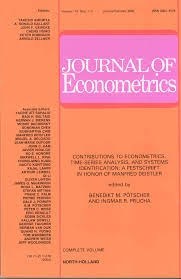
Kiviet, J. (2020). Testing the impossible: Identifying exclusion restrictions Journal of Econometrics, 218(2):294--316.
-
Affiliated authorJan Kiviet
-
Publication year2020
-
JournalJournal of Econometrics
Method of moments estimation usually implies exploiting presumed uncorrelatedness of model disturbances and identifying instrumental variables. Here, utilizing non-orthogonality conditions is examined for linear multiple cross-section simultaneous regression models. Employing flexible bounds on the correlations between disturbances and regressors one avoids: (i) adoption of often incredible and unverifiable strictly zero correlation assumptions, and (ii) imprecise inference due to possibly weak or invalid external instruments. The suggested alternative form of inference is within constraints endogeneity robust; its asymptotic validity is proved and its accuracy in finite samples demonstrated by simulation. Next to offering an attractive alternative as such, it permits a sensitivity analysis of inference based on orthogonality conditions. Moreover, it yields statistical inference on the validity of exclusion restrictions regarding candidate external instruments, whereas these unavoidable restrictions were always supposed to be non-testable. The practical relevance is illustrated in a few applications borrowed from the textbook literature.